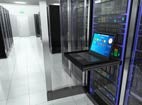The coming year will be a pivotal one for a wide range of data center components including everything from servers and storage to the virtual layer and cloud architectures. But before I get to all of those, I thought it would be a good idea to see what is likely to happen to the data center itself. After all, with enterprise infrastructure poised for some truly wide-scale distribution, the data center is increasingly being viewed as a single component of perhaps a global data environment.
And while some may argue that the data center will diminish in importance as responsibility for actual physical layer infrastructure falls to the cloud provider, the fact remains that for the coming year, at least, enterprises of all sizes will rely on their own data facilities to a higher degree than in years past.
Why? Well, according to IO CEO George Slessman, the data center is the underpinning for everything the enterprise hopes to accomplish in the transition to virtual/cloud architectures. That means rather than simply building for raw power and capacity, investment in data infrastructure will have to stress speed and agility in order to meet the wildly diverse data loads coming your way. To that end, the software-defined data center (SDDC) will make its way further down the stack to encompass open compute systems, increased data intelligence and the adoption of “data sovereignty” as a guiding principle in distributed architectures.
In terms of actual physical-layer development, the data center industry will have to confront four major forces that are changing the way data is managed and processed, according to Intel’s Jeff Klaus (no relation to the guy in the red suit, I don’t think). Topping the list is the need for greater interactivity, particularly when it comes to integrating mobile traffic into the data center while maintaining expected service levels. As well, the cloud will produce significant migration challenges even as it helps take the burden off of traditional data infrastructure. High-performance computing (HPC) is also making its way from top research labs and government facilities to the mainstream enterprise and, naturally, security will become ever more prevalent up and down the stack. To confront these challenges, the enterprise will need to invest heavily in consolidation, virtualization and high-efficiency platforms to meet higher loads with more streamlined infrastructure.
This is good advice in general terms, but what exactly should the CIO do to bring legacy infrastructure into the 21st Century? According to Gartner, CIOs should consider eight key areas of investment. Topping the list is power efficiency across processor and memory architectures as this is the only way to implement broad scalability without blowing the operating budget. As well, don’t simply move resources to the cloud but instead seek a balanced topology and delivery model that covers internal and external infrastructure. And no matter what you do, plan for increasingly dynamic OS and application environments as users come to expect anytime/anywhere data services as the natural order of things.
With all of these changes taking place, though, doesn’t it make more sense to simply build new data centers from scratch rather than undergo the painful process of upgrading legacy environments? For some, this may be the wisest course, particularly as new consolidated infrastructure platforms hit the channel. However, a recent survey from UMT Tech suggests most CIOs feel there is still plenty of value in existing plant. Only 17 percent of respondents indicated the need to build anew, even though most predict their current facilities will run out of room and power/cooling in the coming year. At the same time, however, only 18 percent are planning to upgrade without significantly changing hardware footprints, which suggests that virtualization and software-defined everything are difficult plays under current infrastructure.
2014, then, looks to be the real start of the massive data center conversion we’ve been hearing so much about lately, and it most likely begins with a good old-fashioned hardware upgrade.



